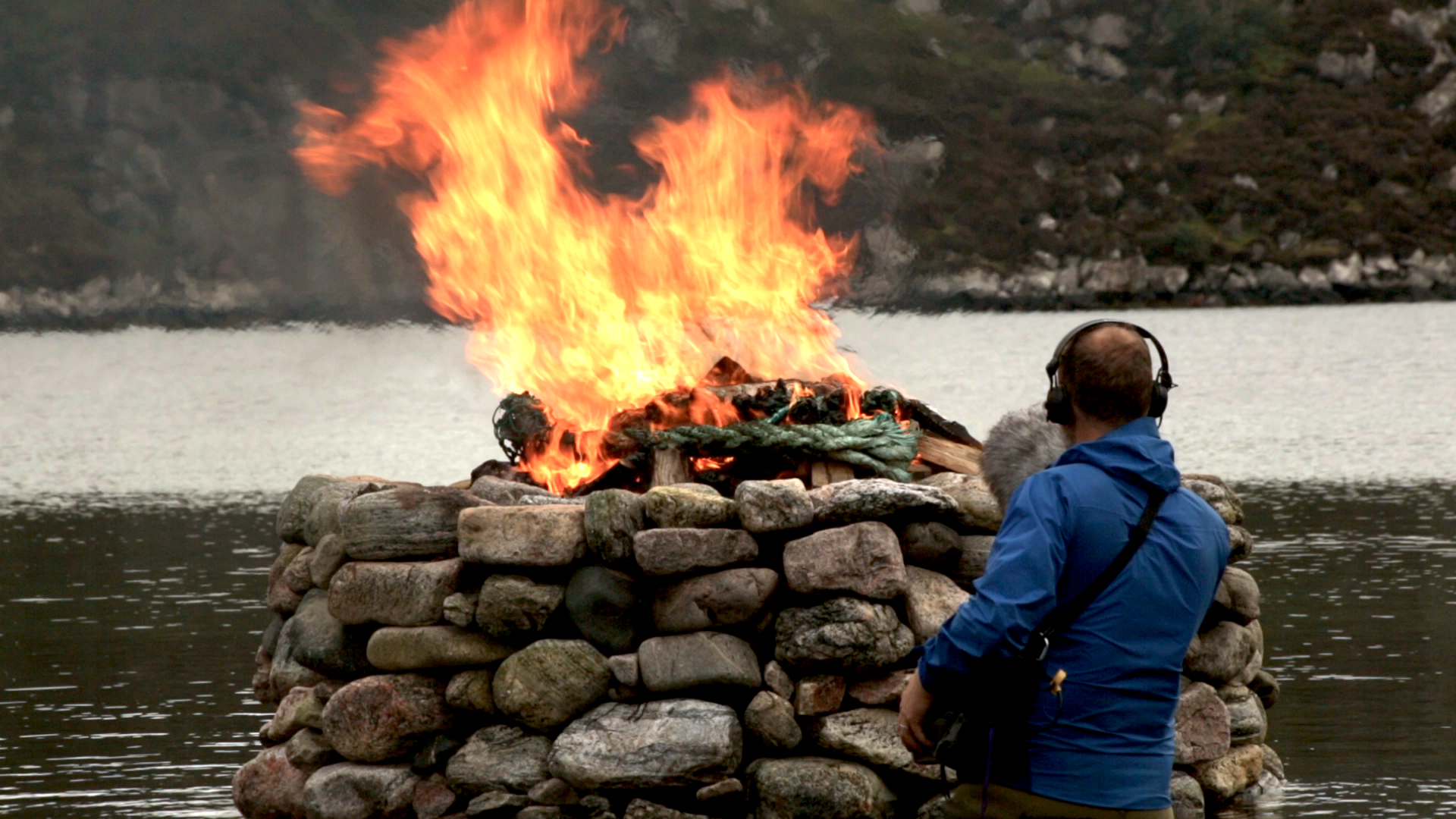A look at Aquarian Audio’s new hydrophone range, the A5.
Read MoreAquarian Audio A5
First Impressions
BLOG

Aquarian Audio A5
First Impressions
A look at Aquarian Audio’s new hydrophone range, the A5.
Read More
Recording a close perspective on one of Julie Brook's Firestacks. (© 2017 Julie Brook)
Its been a year since our first trip to the Outer Hebrides in the Winter of 2017, where we recorded the sounds of Julie Brook's fascinating Firestacks. Six months later in the Summer of 2017, we were lucky enough to revisit this stunning corner of the world, on a follow-up assignment; this is a brief account of the experience.

Waiting for a boat ride to complete the last leg of travels to reach the work location.
The main focus of these field recording trips is to document the life-cycle of the Firestack; from building, to firing, to extinction, as well as its environment. An important perspective that Julie has always been keen on capturing is the underwater one - what does it sound like under the surface when the tidal waves engulf the Firestacks?
On the first trip we had the privilege to work with a pair of Ambient ASF-1 Hydrophones, which we absolutely loved. The second time round we used a H27S Stereo Hydophone from Monkey Sound - an artisan contact mics manufacturer based in Spain - as well as our old faithful JrF D-Series Hydrophones. The H27S caught our attention because it comes in one casing. Given the rough seas we faced the first time round, it seemed like a practical feature in terms of retrieving the mic planted in the Firestack after the tide has covered it (Firestacks are around 1.5 meters tall at their highest point). These clips give you an idea of the colour and stereo field of this neat, relatively new, hydro-mic on the market.
You can download longer versions of these recordings here (free to use under the Sound Ark License Agreement).
Here's a few more sights and sounds we recorded - hope you enjoy them on your device as much as we enjoyed them in the field.
These are cold long days in a remote bay on the Western-most part of Lewis, and that's what makes it so special. There is practically no shelter, the nature is bare and the exposure to the elements constant. There is virtually no noise pollution, very little chatting between the crew and so the day becomes mostly a long introspective moment. It's a positive experience - you are immersed in the surroundings, constantly active, albeit completely still a lot of the time. The hours fly and before you know it (plus a 40-minute hike) you are back at the bothy, lighting the fire and regaining your extrovert self with the help of a dram of Scotch whisky.
Without a doubt one of the most inspiring assignments we have had the pleasure to work on so far, looking forward to round 3!
What's the most inspirational recording or filming location you have worked in? We'd love to hear your stories, especially if the location was free from noise pollution or on the contrary extremely noisy - you can leave us a comment below.
Next week I’ll be travelling to a remote location on the Outer Hebrides of Scotland to record the sounds of Julie Brook’s captivating ‘Firestacks’, above and underwater. A very exciting project in many ways, not least for the quality noise-pollution-free time I will be having but also because I get to use arguably the best underwater microphone in the market: Ambient Recording's ASF-1 a.k.a The Sound Fish.
Close up on the ASF-1 Stainless steel body (centre) and acoustic sensor with NBR membrane (right).
I received the microphone yesterday and went straight to the closest water feature to give it a test. I will say straight away that I was blown away by the quality. From feel to looks it is apparently clear this is a superior piece of kit. It ships with a default (thick) 10m long cable and I also got a 50m one as the location I'll be recording in is subject to high tides.
The Arney river from Arney bridge in County Fermanagh, Northern Ireland.
ASF-1 (left) and JrF D-Series (right) going for a dip.
To a Field Recordist, the opportunity of hearing something you’ve never heard before or just hearing it like never before, is the ultimate reward. The ASF-1, with its low noise and wide frequency response, enables just that. My experience with underwater recording so far always left me with a feeling that something was missing. Frequencies mainly but also the sensation that water was an adverse and somehow inaccessible medium for sound. This hydrophone completely removes all those barriers. It gives, allow me the pun, a fully immersive experience. Here's a few downloadable samples:
To sum up, in case it wasn’t clear enough: I’m completely sold. And if I had the money I’d get it straight away, times two. The total cost including underwater accessories would circle around £1500 per mic, so for the moment we’ll stick to renting it from these lovely people.
PS - a short comparison A/B file with the JrF D-Series Hydrophones can be downloaded here - I'll let you draw your own conclusions.
Sound Ark is an Audio Production & Post Production facility based in Fermanagh, Northern Ireland. We offer tailor-made audio packages, inclusive of every aspect from location recording to final mix. Producing consistently high-caliber sound effects, using state of the art technology and a commitment to achieving our clients' audio vision.
Sound Ark Studios | Mackan, Enniskillen, Co. Fermanagh, BT92 3GJ, United Kingdom